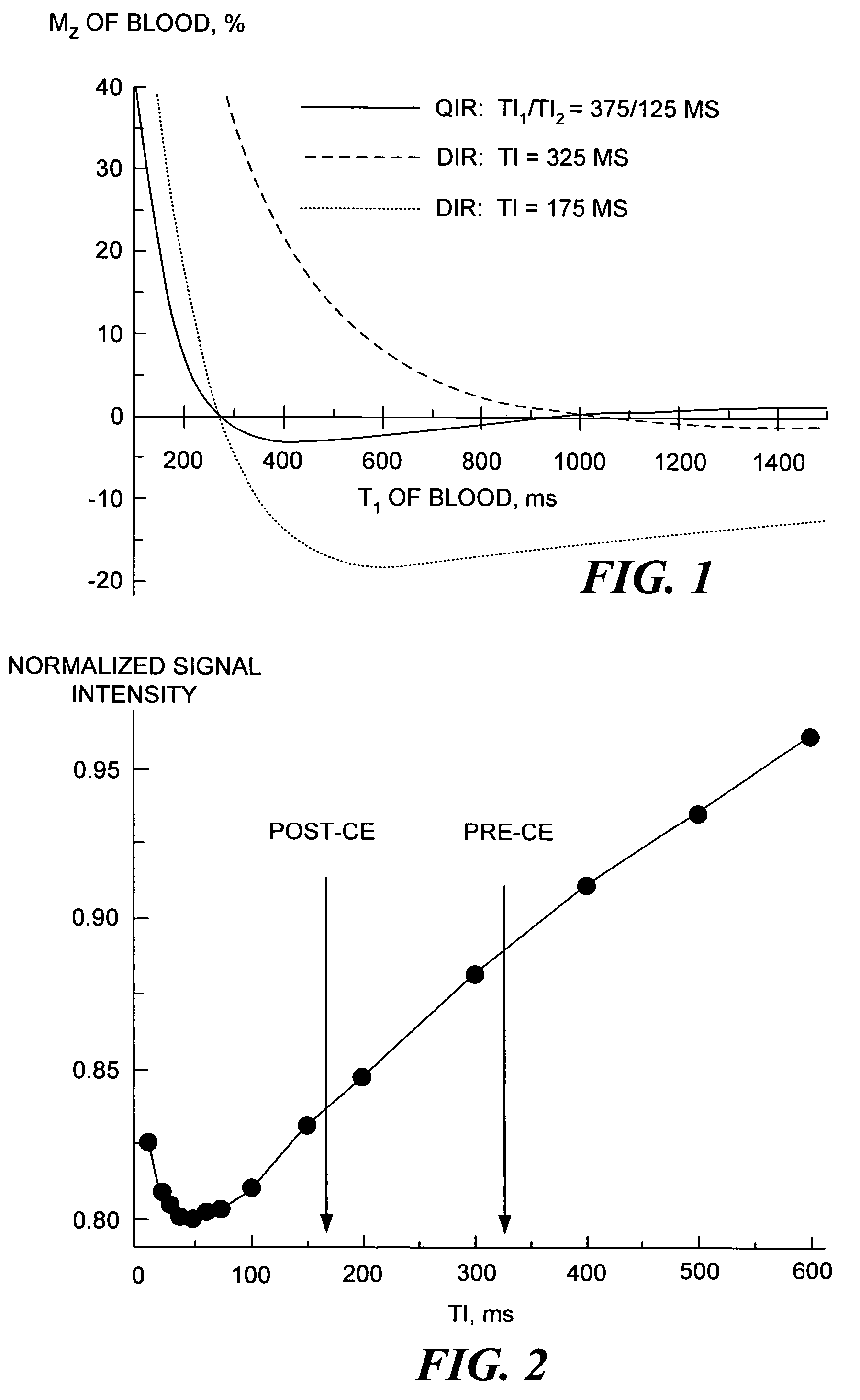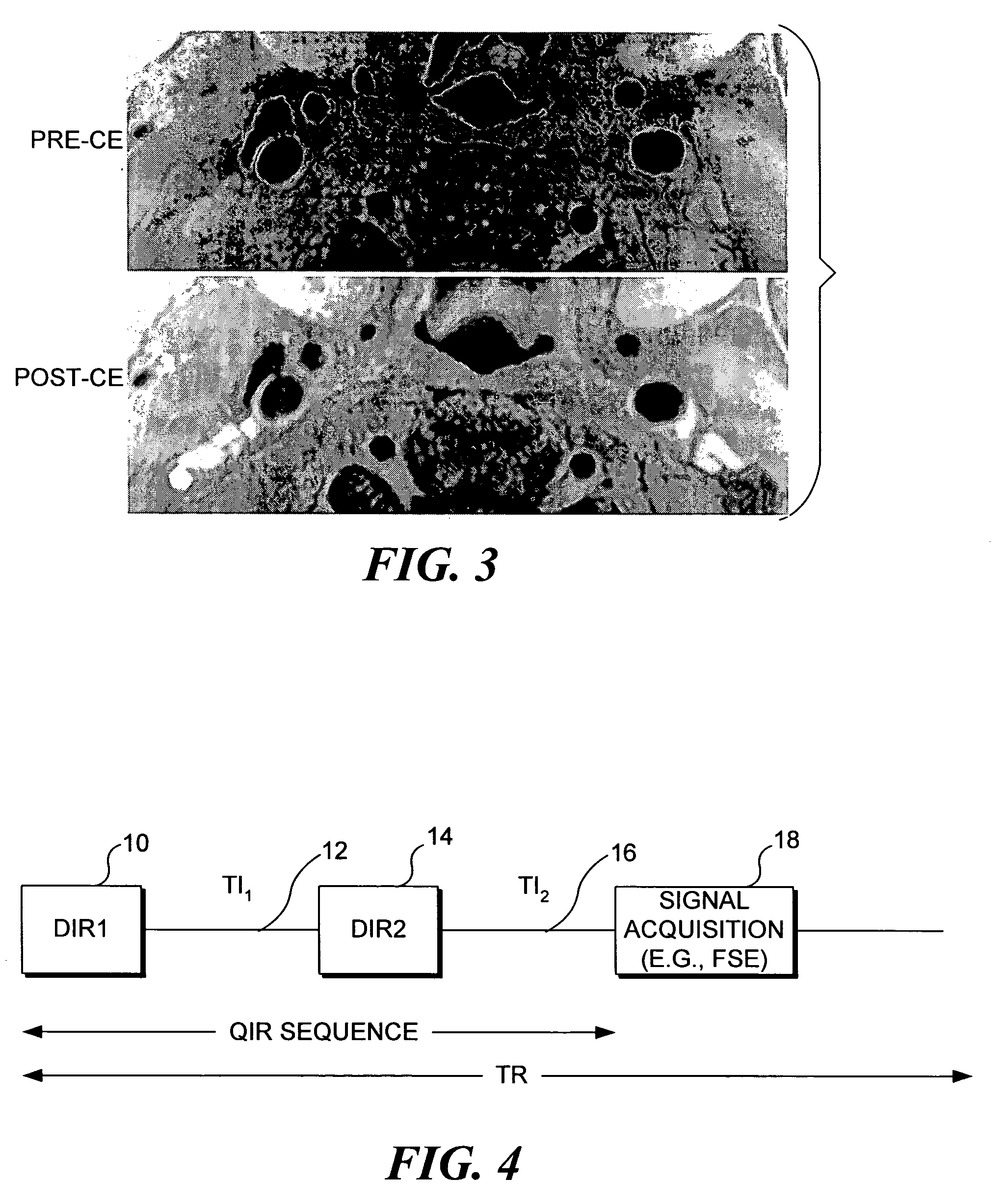Quadruple inversion recovery for quantitative contrast-enhanced black blood imaging
a black blood imaging and quadriple inversion technology, applied in the field of magnetic resonance imaging (mri), can solve problems such as providing efficient suppression
- Summary
- Abstract
- Description
- Claims
- Application Information
AI Technical Summary
Benefits of technology
Problems solved by technology
Method used
Image
Examples
Embodiment Construction
Method
[0018]Sequence: In the present invention, suppression of the flowing blood signal and artifacts is achieved using a quadruple inversion recovery (QIR) pulse sequence. The QIR pulse sequence includes two double inversion pulse pairs, the first double inversion pulse pair being followed by an inversion delay period, TI1, and the second double inversion pulse pair being followed by an inversion delay period, TI2. The double inversion procedure is known from its use in a double inversion-recovery (DIR) pulse sequence. Use of the DIR sequence for achieving black-blood imaging is generally well known to those of ordinary skill in the art of MRI. It is also known that the DIR method provides efficient suppression of the blood signal in a narrow range of T1 values, which makes the use of DIR problematic in the presence of contrast enhancing agents, since such agents strongly affect the T1 of blood. However, in accord with the present invention, by performing a plurality of successive ...
PUM
 Login to View More
Login to View More Abstract
Description
Claims
Application Information
 Login to View More
Login to View More - R&D
- Intellectual Property
- Life Sciences
- Materials
- Tech Scout
- Unparalleled Data Quality
- Higher Quality Content
- 60% Fewer Hallucinations
Browse by: Latest US Patents, China's latest patents, Technical Efficacy Thesaurus, Application Domain, Technology Topic, Popular Technical Reports.
© 2025 PatSnap. All rights reserved.Legal|Privacy policy|Modern Slavery Act Transparency Statement|Sitemap|About US| Contact US: help@patsnap.com



